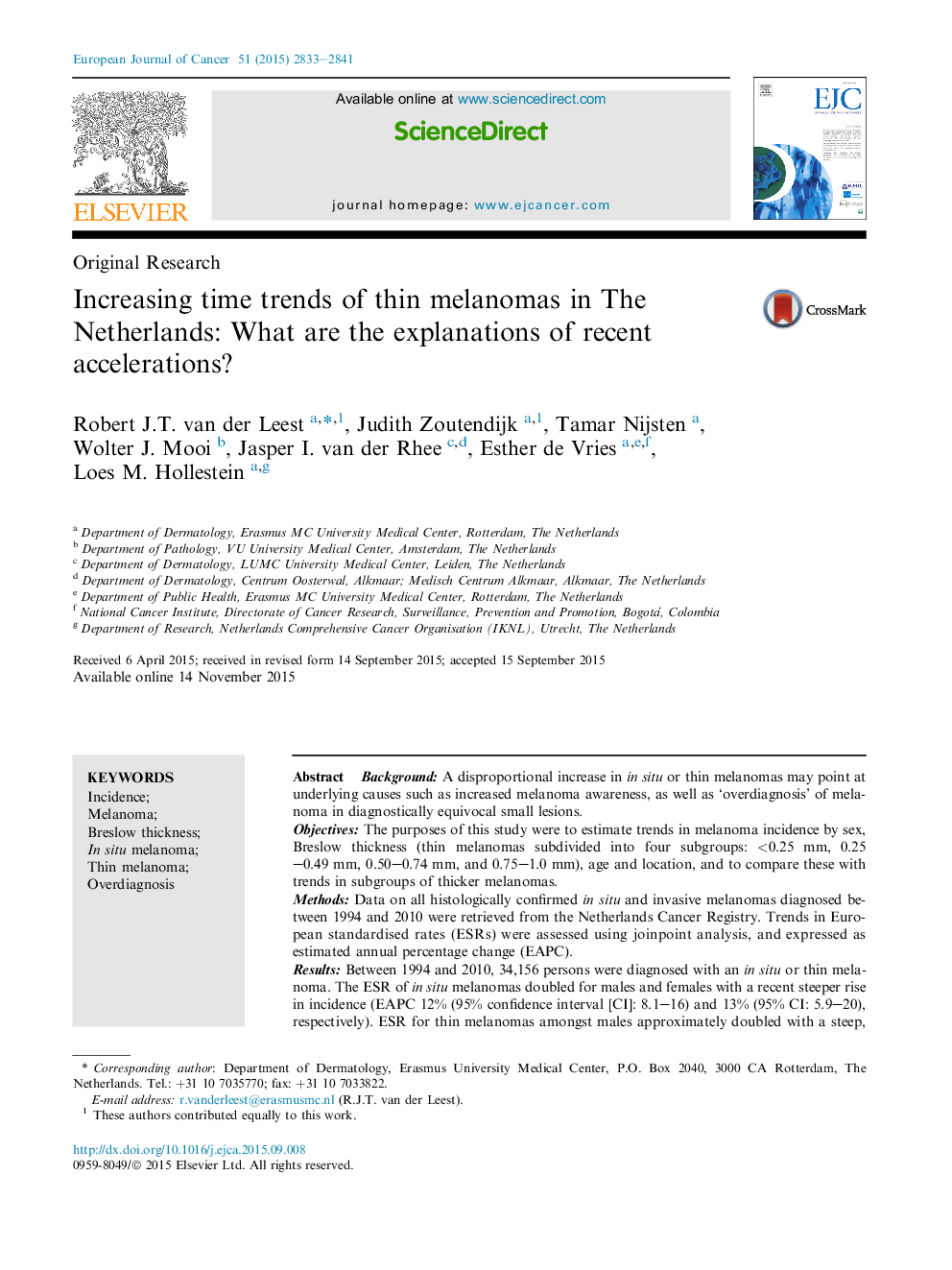| Article ID | Journal | Published Year | Pages | File Type |
|---|---|---|---|---|
| 2121566 | European Journal of Cancer | 2015 | 9 Pages |
•We examined incidence trends of in situ and thin melanomas in the Netherlands.•Incidence of thin, but also of thicker melanoma increased in the Netherlands.•Overdiagnosis of thin melanomas may have contributed to increasing incidence trends.•Other mechanisms are increased ultraviolet exposure/awareness and diagnostic drift.
BackgroundA disproportional increase in in situ or thin melanomas may point at underlying causes such as increased melanoma awareness, as well as ‘overdiagnosis’ of melanoma in diagnostically equivocal small lesions.ObjectivesThe purposes of this study were to estimate trends in melanoma incidence by sex, Breslow thickness (thin melanomas subdivided into four subgroups: <0.25 mm, 0.25–0.49 mm, 0.50–0.74 mm, and 0.75–1.0 mm), age and location, and to compare these with trends in subgroups of thicker melanomas.MethodsData on all histologically confirmed in situ and invasive melanomas diagnosed between 1994 and 2010 were retrieved from the Netherlands Cancer Registry. Trends in European standardised rates (ESRs) were assessed using joinpoint analysis, and expressed as estimated annual percentage change (EAPC).ResultsBetween 1994 and 2010, 34,156 persons were diagnosed with an in situ or thin melanoma. The ESR of in situ melanomas doubled for males and females with a recent steeper rise in incidence (EAPC 12% (95% confidence interval [CI]: 8.1–16) and 13% (95% CI: 5.9–20), respectively). ESR for thin melanomas amongst males approximately doubled with a steep, but non-significant acceleration compared to other thickness categories since 2006 for <0.25 mm melanomas (EAPC 26% (95% CI: 2.1–35)). For female patients with thin melanomas the ESRs increased almost two-fold, except for <0.25 mm melanomas.ConclusionsThe incidence rates of in situ, thin and thick melanomas increased similarly between 1994 and 2010. Recently steep increases were found for in situ melanomas and thin melanomas in men. Explanations are ‘overdiagnosis’ in conjunction with increased ultraviolet exposure (natural and artificial) and therefore a ‘true’ increase, increased awareness, early detection, diagnostic drift and changed market forces in the Dutch health care system.
